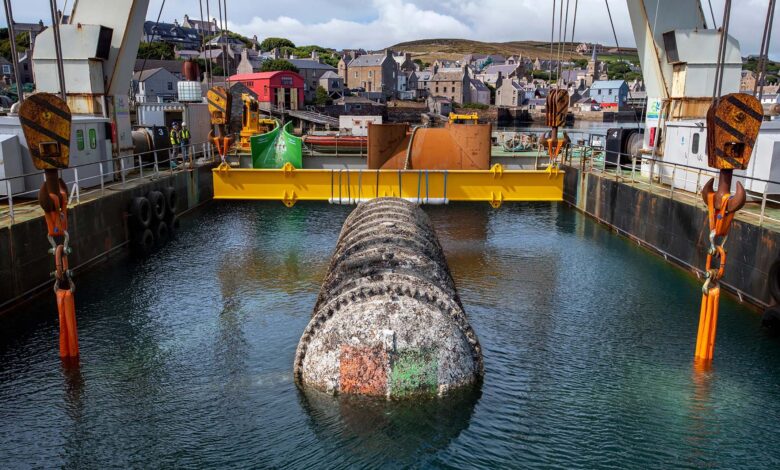Microsoft and it’s underwater data center
According to Microsoft website the underwater data center project began with the idea of leveraging the ocean's natural cooling properties, to reduce the environmental impact and operational costs associated with traditional land-based data centers.

In a ground-breaking step towards sustainable technology, Microsoft submerged a data center beneath the ocean’s surface.
This innovative move, which is part of Project Natick, showcases the tech giant’s commitment to cutting-edge solutions for energy efficiency and environmental conservation.
According to Microsoft website the underwater data center project began with the idea of leveraging the ocean’s natural cooling properties, to reduce the environmental impact and operational costs associated with traditional land-based data centers.
The company writes that, “Submerging the data center in the sea off the coast of the Orkney Islands, Scotland, allowed Microsoft to utilize seawater for cooling without the need for energy-intensive air conditioning systems”
The underwater environment as explained by Microsoft offers a stable, controlled climate that is ideal for data center operations.
“By placing servers in a sealed container filled with dry nitrogen, Microsoft reduced the risk of hardware failure caused by temperature fluctuations and humidity. This setup has proven to be significantly more reliable, with the underwater data center experiencing only one-eighth the failure rate of its land-based counterparts,” said New Atlas one of the world’s largest independent science and technology publications.
Moreover, the project of Microsoft is powered by renewable energy sources, including an onshore wind farm, aligning with it’s goals for carbon neutrality.
Datacenter Dynamics (DCD) which is the world’s largest data center publication, revealed that the use of seawater for cooling, eliminates the need for potable water, a critical advantage in the face of global water scarcity.
Environmental Impact
Research shows that the underwater data center of Microsoft has minimal impact on marine life. The discharged water according to DCD is slightly warmer than the surrounding ocean, hence does not affect the local ecosystem significantly.
“In fact, the structure itself has become a haven for sea life, acting as an artificial reef and promoting biodiversity in the area,” said DCD.
Future Implications
The success of Project Natick of Microsoft could signal a shift in how data centers are deployed and managed globally.
On their website Microsoft noted that with more than half of the world’s population living near coastlines, underwater data centers could provide low-latency services, to these densely populated areas without the need for extensive land use.
They (Microsoft) added that this approach offers a scalable, sustainable solution to meet the growing demands of cloud computing.
Microsoft’s innovative underwater data center is not just a technological marvel, but also a potential blueprint for the future of sustainable data storage and management.
The findings from this project will likely influence future data center designs, pushing the boundaries of what is possible in the realm of green technology.
ALSO READ: https://charmarnews.com/huawei-cloud-launches-pangu-models-3-0-and-ascend-ai-cloud-services/







